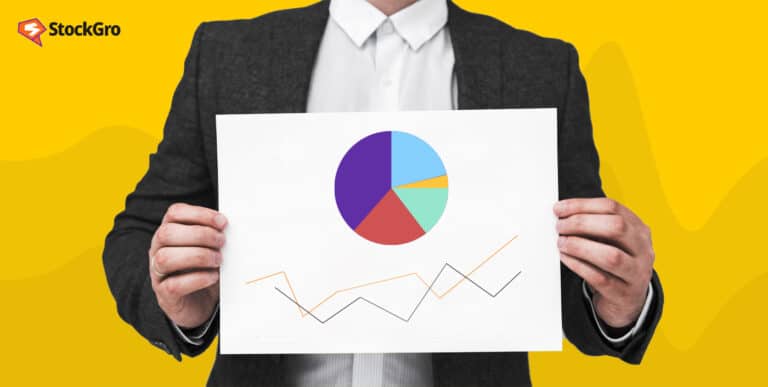
What is LTP?
LTP stands for “last traded price”, which is the price at which buyers or sellers in the market have made their most recent trade. The last traded price is perhaps the most fundamental indicator in a brokerage. In most large stocks with lots of liquidity, the LTP is essentially the current market price of the share (for stock trading only).
The LTP in the share market is calculated by the app you’re using in real-time. Since it is a very important metric that all investors want to track, it is reflected quite visibly on the trading screen.
You may also like: How to invest in stock market?
This is one of the numbers that helps investors decide a price at which they can place buy or sell orders. In most circumstances, the closer their order price is to the LTP, the better are the chances of that order being filled.
LTPs also help you understand how the share price trends across a chart or pattern. Candlestick charts, in fact, are created by charting the movement of the share’s last traded price over the day.
How is LTP calculated?
One does not need to calculate the LTP manually. It is usually available on the trading screen near the concerned stock. Since the LTP for liquid stocks changes every second, LTP in some apps could also take the colour of the latest change – a price increase would be indicated in green and a decrease in red.
Also read: Explore the art of speculation – speculative trading
For the LTP to get updated, the market needs three parties:
- Sellers willing to sell the stock at a certain price
- Buyers willing to buy at a certain price
- The exchange that can match buyers to sellers at the agreed price
The exchange is involved in calculating the LTP in real time. They do so by doing what exchanges do — matching sellers to buyers. When both these parties agree on a certain price (which happens several times every second), the last traded price gets updated automatically.
LTP in futures trading
The LTP for futures contracts is a bit different. While the last traded price still remains the price at which the trade occurred, traded prices in the near-month, next-month, or the far-month can also become the LTP. Calculation mechanisms remain the same for futures as they are for regular stock trading and are done through the order book.
LTP in options trading
When you trade in options, you need to pay option premiums – which are fees you pay to buy something at a certain price in the future. The LTP in an option chain shows the current price of the option. This price reflects how much people are willing to pay for the special deal right now.
When people trade in these options, they’re actually trading the option premiums. So, the amount of money people pay or receive for these deals becomes the LTP or the current price of the option.
Also read: Key risks in investing in the stock market
Significance of the LTP
Orders placed on the stock markets get filled at the LTP. Differences between order types depend entirely on the LTP.
For instance, a market order gets executed near the LTP for most liquid shares. A limit order places a limit for order fulfilment at a certain price, but it gets fulfilled only when the LTP reaches the limit. The same goes with Stop Loss orders too.
Traders, hence, have to modify their orders to match the movements of the LTP chart. If they quote the ask / bid price above or below the LTP, they run the risk of having their orders go unfulfilled.
Not only that, LTP charting in candlestick charts is an indispensable technique that traders around the world cannot function without. Here’s a news article that analyses the LTP patterns and latest developments in top stocks.
Effect of volume on LTP
The ease of buying or selling a stock in the market can really affect how much its price goes up and down. When a lot of the stock is being bought or sold at a certain price, the final price at the end of the day tends to stay steady. This means that people selling the stock are likely to ask for a price that’s not very different from what buyers are willing to pay.
But when not many people are buying or selling a stock, it gets harder to agree on a price. If a trade happens, the price at which the stock is bought or sold could be very different from what people think the stock is really worth.
The difference between LTP and the closing price
The LTP of a share is largely relevant only when people are actually trading that stock. At the end of the trading session, the last LTP of the session is converted into the closing price. This means that while all closing prices were once LTPs, the converse is never true.
LTPs are also calculated in real time by the exchange because they change very frequently. On the other hand, the closing price is computed by taking the average of volume-weighted average prices and LTPs in the last 30 minutes of trading before it closes for the day.
Hence, while LTPs change every second, closing prices once calculated in the last 30 minutes of the trading session are set in stone for that day.
Conclusion
In conclusion, understanding the concept of LTP in the share market is essential for any investor. LTP represents the most recent price at which a stock was bought or sold. Monitoring LTP trends can provide insights into market sentiment and potential price changes too. Whether you’re a seasoned investor or are just starting, keeping an eye on the LTP is the first you need to learn to do!

